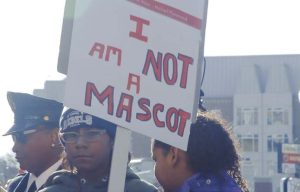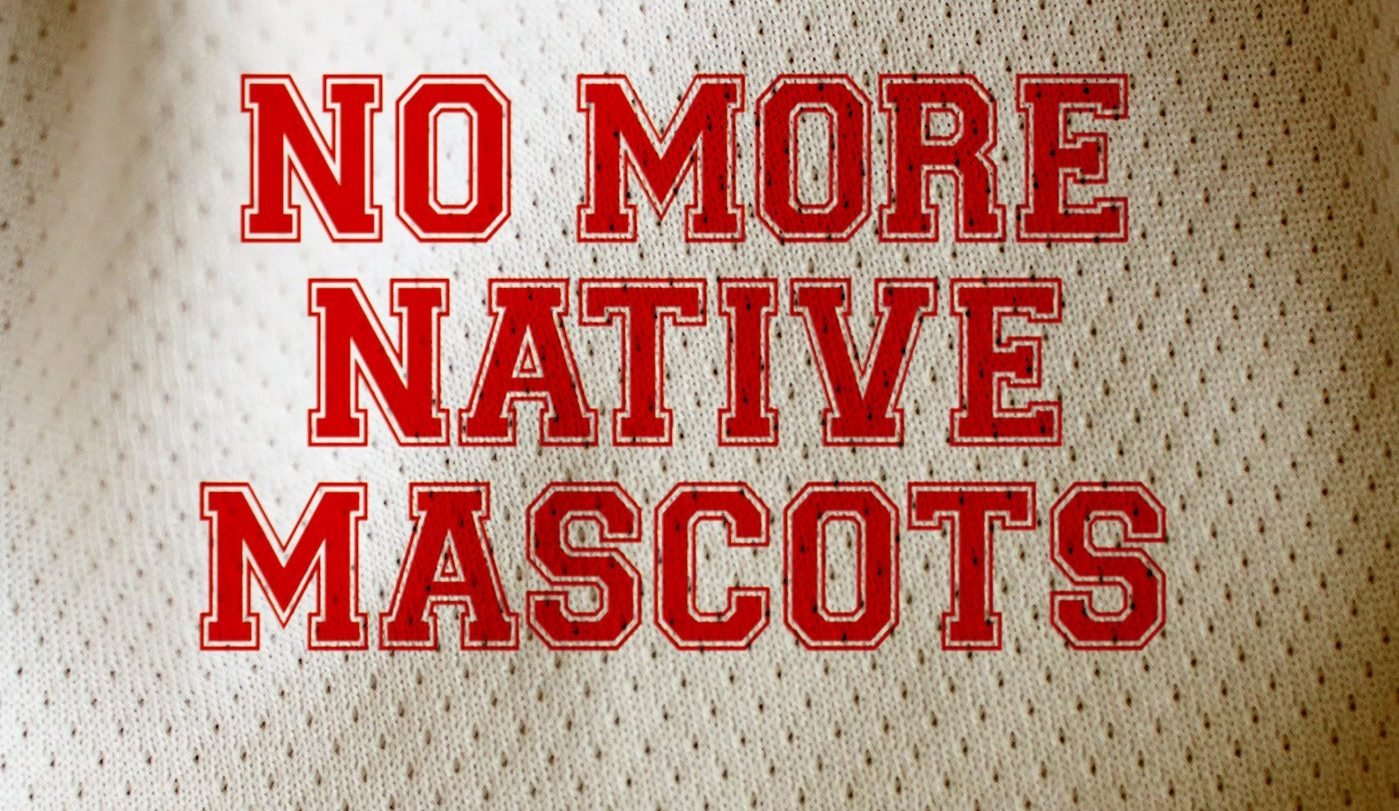Throughout the nation, scores of professional sports franchises and local school teams maintain mascots that draw inspiration from Native American cultures.
In fact, a database managed by the National Congress of American Indians that tracks Native mascots found that nearly 2,000 secondary schools still use them, and the numbers aren’t changing much. Between March 2022 and April 2023, only 16 have reportedly removed theirs.
To address this, Native nonprofits and communities, alongside advocates across higher education and elsewhere, are continuing to fight against inaccurate portrayals of their cultures and are finding ways to enhance contemporary understanding and visibility.
Although higher education has virtually eliminated its use of Native mascots, an objective achieved over decades, experts say the fight isn’t over. They are asking leaders to raise awareness about the issue and consider implementing a number of best practices to further advance Native representation and education at their institutions.
History and Harm
Native mascots rose to prominence in the 1900s and became contentious during the 1960s as a result of advocacy during the Indigenous rights movement. Since then, a substantial number of educational institutions and professional teams have retired the culturally appropriated and derogatory symbols.
What furthered this progress in the realm of higher education was the 2005 policy announced by the NCAA, which deterred colleges and universities from using “hostile and abusive racial/ethnic/national origin mascots, nicknames, or imagery.” That same year, the American Psychological Association (APA) called for the unilateral retirement of Native sports symbols, team names, and mascots.
Higher education institutions obliged. A select few teams, such as the Florida State University Seminoles, have formal agreements with local Native American tribes or organizations to continue their use. Today, the majority of Native mascots are found primarily in secondary schools and professional sports.

Bull
The issue was once again brought to the media forefront this year, with protests against the Kansas City Chiefs’ name, logo, and “Tomahawk chop” ritual, ahead of the 2024 Super Bowl in Las Vegas.
“In particular, [the issue is] the name combined with behaviors … and it’s fans wearing what they consider to be ‘fan wear’ but that is often offensive to Indigenous people … [and it’s] the idea that you would use a living people as a mascot, which is intended to be like a caricature of a figure,” says Cheryl Crazy Bull, president and CEO of the American Indian College Fund and a member of the Sicangu Lakota Nation.
Overall, addressing historic inequities faced by Native populations, including

Lindquist,
PhD
economic, health, and educational disparities, becomes difficult if people are not proud of their identity, says Cynthia Lindquist, PhD, president of Cankdeska Cikana Community College and member of the Spirit Lake Dakota Tribe.
She points to the psychological impact stereotypes have on Native communities, described in studies conducted by Stephanie Fryberg, a prominent researcher in the field.
Some of Fryberg’s key findings, highlighted by the APA, include that Native mascot imagery creates hostile learning environments, weakens the capacity of Native communities to demonstrate an accurate portrayal of their cultures, and can lead to negative relations.

Best Practices for Education and Support
Despite progress across higher education, ignorance over the mascot debate and other common misconceptions about Native cultures continue to exist. Advocates urge organizations to emulate institutions’ decisions to eradicate Native mascots, and encourage faculty, staff, and students to consistently promote understanding and justice across campuses.Lindquist emphasizes the importance of educating the public about the history of oppression and forced assimilation, both through curriculum and community events, such as with movie screenings and Native speaker gatherings. Leaders can also support faculty- and student-led research, as well as community projects.
“I think higher education has a responsibility to do more, to push harder and to really investigate, to support that research, and to disseminate as broadly and as much as possible,” Lindquist says. “Sometimes it takes brave people or brave institutions to do that. … But let’s have the discussion.”
John Little, PhD, director of Native recruitment and alumni engagement at the University of South Dakota (USD) and member of the Standing Rock Sioux Tribe, co-produced the documentary “More Than a Word” in 2017, focusing on the impacts of Native-derived mascots, particularly regarding the former name of the

PhD
Washington, D.C., NFL team. In the future, he hopes to produce more films focused on sharing Native stories.
“[As] you’re eliminating negative representation of Native people, you have to start filling it in with positive representation,” he says. “That’s always been the criticism — “If we get rid of Native mascots, we’re not going to know how to honor Native people.’ You have to put something else out there.”
Representation can also be enhanced within higher education by fostering relationships with Native communities and implementing programs aimed at increasing the presence of Native faculty, staff, and students, he says. This effort can be magnified by establishing a welcoming, comfortable environment like the Native American Cultural Center at USD, which provides a tightknit community, kitchen and lounge spaces, and inclusive, culturally relevant activities.
Student recruitment can be further bolstered with initiatives that offer monetary and academic assistance, says Lindquist, including scholarships and financial aid.
Additionally, educators can turn to informative online resources created by a variety of nonprofits and initiatives committed to this work, CrazyBull adds. This includes IllumiNative, Reclaiming Native Truth, and This is Indian Country, which are campaigns dedicated to amplifying Native voices and promoting research, understanding and awareness, and equity and justice.
“[These resources] educate the public in ways that — I hate to say it like this — humanize us and make us contemporary,” she says. “We’re not historical. We’re not gone. We’re still here. [It] help[s] people understand the mascot issue better as well.”●



















